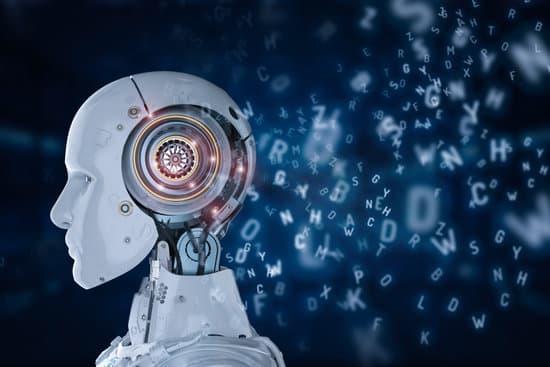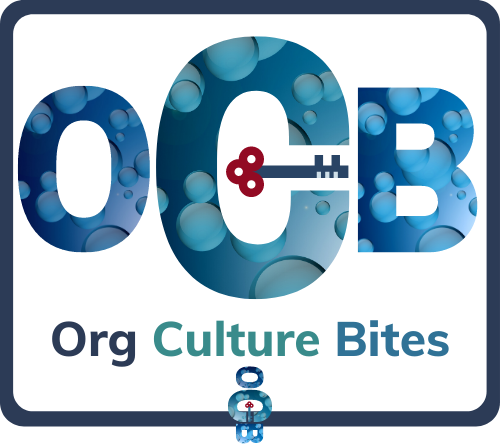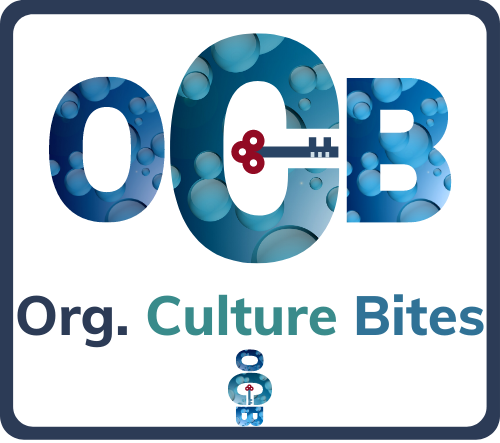-
 play_arrow
play_arrow
-
 play_arrow
play_arrow
-
 play_arrow
play_arrow
-
 play_arrow
play_arrow
- Home
- keyboard_arrow_right Advisory
- keyboard_arrow_right Diagnostics
- keyboard_arrow_right Embracing AI in HR: 7 Top Tips to Enable Transformation Success in Australia, 2024
Embracing AI in HR: 7 Top Tips to Enable Transformation Success in Australia, 2024
Angela October 27, 2024 290

Topics:
- Business Context: The Imperative of AI Adoption
- Creating environments for people to learn, innovate, adapt and grow
- AI potential across the spectrum of HR Activities
- Types of AI adoption
- Recent examples and Australian success stories
- Practical Delivery tips for HR
- Risks you need to factor into HR planning and implementation

Workplaces in Australia are continually challenged to evolve – as we strive to keep pace with our global counterparts and remain competitive back on home ground. Not only are we finding the right balance for hybrid or remote working, securing and retaining talent to meet local demand, deciding to invest or not in a ‘not so certain’ world, we are also facing into a new era of technological evolution. It’s faster and more powerful than we’ve known. It’s in a constant state of development and often seems that counterparts overseas are hitting a more substantial pace in their ability to innovate and adopt to this new era of Artificial Intelligence (AI).
AI applications are exciting and mind blowing, yet daunting at the same time. Even as I write, the information I am currently aware of will change overnight and my curiosity explodes thinking about what AI headlines will surprise us next. We are on another precipice of societal change… what better moment than to jump in, learn more, ride the wave and give it a red-hot go!
The integration of AI in Human Resources (HR) has well and truly moved from concept to reality. Australian companies, along with their global counterparts are leveraging AI to predict and solve problems before they become issues, simplify and enhance HR processes, drive efficiency, improve employee engagement, productivity and performance.
This is just the tip of the iceberg. If you’ve dabbled with Chat GPT, co-pilot, Gemini or your own in-house GTP, you wouldn’t be alone if you’ve found it both liberating as well as questionable. What we can be certain about however, is that the more we identify opportunities to explore AI and test it with our most common and critical problems, the more willing we are to persevere, test, prototype and train AI, the further we will go in achieving solutions that will help us achieve our organisational and professional goals.
1. Business Context: The Imperative of AI Adoption
According to KPMG’s 2024 CEO Outlook survey, 58% of Australian CEOs prioritise Generative AI as a top investment despite economic uncertainties. This commitment highlights AI’s potential to drive efficiency and competitive advantage in organisations globally and locally [1].
There are also some important fundamentals to have in place to optimise this potential and ensure we’re giving our people and technology the best chance to ‘build and perform’ at the same time. Acknowledging that returns on investment would be another 3-5 years away, three quarters of CEOs in the survey were confident and had clear ideas on how Generative AI would benefit their companies. However, only 42 per cent of Australian leaders (35 per cent globally) think that their data is ready to safely and effectively integrate Gen AI. In addition, challenges such as the ethical application of AI, securing the technical skills and capability required to implement AI, the lack of regulation, the significant cost of implementation and security were also cited as critical areas to navigate as we embark on our adoption journey.
Similar to approaches for building an innovation pipeline, it would make sense that organisations ‘ready’ themselves with a solid vision and roadmap for how they may optimise their chances of widespread adoption and a strong return on investment from AI. Thus, opening further opportunity to capitalise on speed to market, product differentiation or other means of capturing strategic advantage through AI.
This is where the HR business case for adopting AI also becomes increasingly compelling… as the role we can play in shaping cultures, generating insights about our talent, building capability and readiness for significant transformation becomes even more critical.
2. Creating the environment for people to learn, innovate, adapt and carefully grow
It’s no secret that there are some companies and cultures that adapt well and actively face into changing environments. Others may wait for leaders to ‘test the water’ first and some prefer to hang behind and watch for longer term outcomes before fully committing. Recently, COVID-19 gave us the reality check, where our organisational and personal propensity to adjust was truly put to limits as we faced our fears in a global pandemic. However, this next wave of change hitting us is one of opportunity; to explore, experiment and create value. We need to balance a healthy drive for innovation alongside a rigorous approach to risk management.
As our organisational strategies are becoming more divergent, it’s our culture, mindset, values, behaviours, propensity to innovate and the targeted actions we take as an integrated entity, that will help differentiate and set us apart.
Businesses and teams that are open to collaborative innovation, informed risk taking, those that have high trust and a safe environment to test and fail may indeed be the ones forging pathways to optimise AI opportunity. Judy Slatyer from CSIRO’s National AI Centre Think Tank, stressed “the importance of transparency and accountability when striking the balance between excitement and the ethical adoption of AI.” [2]. Creating the optimal culture to foster this balance will be key.
Arguably, Australian organisations may not be feeling ‘prepared enough’ to ride the next wave of generative AI and may not be adapting as fast as our global counterparts. [3] It is important that businesses put in place the tangible policy guardrails, infrastructure (digital, data, security) and programs to create a platform to safely launch AI. At the same time, we must also think about how we can reinforce important cultural characteristics, mindsets and behaviours that underpin integrity and earns trust in our use of AI.
Herein lies an opportunity for HR, in how we lead and enable the education of our workforces in AI. Our role must ensure inclusion, access and ability for all employees to learn and generate ideas and experiment with technology. Our people also need to be armed with a robust awareness of the expectations in them to carefully evaluate inherent risks and opportunities in using these tools. We must always factor in conscious, ethical principles in the use of ‘AI for good.’ This is where, with the right cultural values and behavioural expectations, genuinely embedded within organisations, we should see faster, safer adoption from our people and ultimately, growth in trust from consumers and communities.
3. AI potential across a spectrum of HR Activities

Problem solving: Common challenges currently being faced in the Australian HR industry, include:
- Addressing the Skills Shortage: In key industries where demand outweighs supply (technology, care sector) as well as the large numbers in the retiring workforce.
- Leveraging technology: Including AI in work tasks to drive efficiencies, augment performance with higher levels of quality, reliability and efficiency
- Doing more with less: Priority and investment in high impact initiatives that link to organisational performance and making sound judgements where trade-offs will inevitably need to be made.
- Strategic HR: Proactively planning for and solving critical ‘people issues’ before they become a business or social issue.
With a view to alleviating these target problems, AI has the potential to become a more integral partner in the HR function in Australia. Whilst it’s still early days, we can start to see where opportunities for efficiency and rigour are starting to emerge.
AI opportunity exists at every level: AI enabled solutions can be found from the individual to the function and enterprise levels of impact.
- At the individual level (with GPT, Copilot, Gemini, selected AI agents)
- Via suppliers; Leveraging value from vendors applying AI to innovate across existing platforms, technology features and benefits
- Internal use cases and development of IP at the functional level: Business prioritised HR use cases, leveraging AI in a bespoke environment to enhance efficiency, accuracy and quality outcomes.
4. Types of AI adoption
There are two main types of AI that can be adopted across various HR functions and tasks; Analytical AI and Generative AI. (See definitions below). In some instances, these types of AI may be leveraged in isolation. More recently, we are starting to see cases where both analytical and generative AI can be used to provide more robust solutions. ERP provider SAP with its recent launch of Joule, Google AI’s Gemini and Microsoft Copilot are good examples of where organisations are combining AI tools across enterprise data platforms and Large Language Models (LLMs) to enable consumers more powerful AI tools in the workplace. This is enabling us to ask logical questions from technology and enterprise data that we’ve not been able to have answered before, at a faster pace and more easily in the ‘flow of work.’
We’re nearly two years from when Chat GPT was first introduced and have already seen an incredible pace of evolution globally. I’ve recently been asked about how and where I have seen AI being adopted in the HR function in Australian workplaces. Below are some examples I can share where I have seen AI applications used to generate solutions to solve common HR challenges, that may help serve as inspiration.
5. Recent examples and Australian success stories
Market research, accelerating insights in EVP, M&A due diligence.
There have been a number of projects I have worked on over the last five years where the use of publicly available information has helped me to conduct comparative analysis and detailed diagnostics that aid critical business and HR decisions. Transparency in regulatory reporting, accessibility of information and customer feedback on the internet has been invaluable. This, combined with AI has given us the ability to source factual detail about our peers, competitors and targets quickly, enabling deeper analysis and more informed decisions about our strategic choices, at pace.
Target Culture building, lifting Employee Engagement and retention to unlock performance:
Predictive analytics has been leveraged for some time to help identify drivers of culture alignment, engagement improvement and retention of employees. Working with leaders and teams, HR can use more robust data-based insights from unstructured data sources (not just surveys, but across broader communications channels and platforms) to identify areas of risk and opportunity. Furthermore, solutions can be automated, including the development of targeted engagement programs by cohort, enhancing employee experience, satisfaction and ultimately, performance outcomes.
Using sophisticated, AI powered diagnostic platforms such as Qualtrics, Workday Peakon and Culture Amp, we can assess sentiment and respond quickly with recommendations to lift employee and customer experience. Gone are the days of arduous annual surveys and the need to manually manage huge data sets and time intensive analysis. We can now design our own diagnostics using customised algorithms, generate impressive user dashboards in real time, respond quickly to unfavorable trends, from multiple data sources and more frequent listening intervals.
Prior to and during Covid, I tested my technical skills (which were very green) to develop targeted diagnostic products to support my growing business. I used the Qualtrics platform to design complex surveys using sophisticated algorithms (with a lot of help from their customer support center). The data points and regression analysis generated in real time helped clients assess Culture gaps, Employment Brand impacts, employee wellbeing risks and talent practice opportunities– linking these directly to target performance outcomes. These tools (using predictive AI) enabled clients to make informed decisions on how to adjust employee policies, responding in real time to external disruption, employee feedback and evolving business needs. Reliable, empirically validated recommendations supported an agile approach to actioning insights from employee sentiment, which was valued by leadership and employees during an otherwise volatile and uncertain time.
Large data lakes that can combine outputs from exit interviews, statistics on absenteeism, performance and employee participation also contain clues to help generate more integrated insights into other aspects of the employee life cycle. AI can be used to interrogate vast amounts of data to predict turnover and early indicators of wellbeing issues, which can be highlighted and acted on more proactively.
For example, using years of health, wellbeing and safety reports, claim histories and industry benchmarks, organisations can identify common lead indicators of psychological and physical risk. This can be used, alongside other contextual information and SME insights, to proactively develop targeted initiatives to address risks, in advance of them occurring or to prevent them getting worse. We have the ability right now, to minimise potential harm to our people earlier on, improving the way we manage safety and wellbeing at work. A secondary benefit may also be the gradual reduction of premiums.
Target Operating Model and Workforce Planning Solutions:
Business scenario planning and forecasting are prerequisite inputs into building HR strategy. Now, AI can add greater flexibility and accuracy into the evaluation of different Operating Model options, as well as the subsequent workforce planning, talent resource mix and cost considerations to meet these targets. Technology providers such as Anaplan, OrgVue and Eq8 for example, are platforms available in the Australian market, designed to aid business scenario planning, talent forecasting, deep and responsive analysis of workforce trends, talent demand, supply and resource mix that aligns with different strategic options.
Job analysis, skills matching and career pathing:
Tech platforms with a focus on talent data are being used to help HR make more informed business decisions, ensuring the right talent is secured at the right time, at the right price, when (and where) it’s available. Reejig, a Sydney-based AI talent platform, has revolutionised internal mobility by matching employees to roles based on the supply of their skills and talent demand, helping organisations close the gap on talent shortages. By identifying existing talent and skills compared to future requirements, the platform uses AI to assist in job matching, recommending redeployment opportunity, training, development and career pathways. In our current tight labour market and aging workforce, the benefits of more effective internal talent mobility and reskilling also extend beyond the workplace, into our communities, stimulating greater inclusion and participation.
Streamlining Employee Support, including Onboarding and Offboarding:
Platforms such as Enboarder, Walk Me and AI-powered chatbots such as Watsonx used by Telstra are helping guide new hires through onboarding processes, providing employees with an assistant-like resource to understand and use policies and processes effectively. This augments Leader, team and HR service interactions (not replaces), to customise the employee experience at the same time as improving efficiency of high volume, standard HR processes. Carefully structuring and streamlining service delivery like this, allows HR to quickly respond to high volumes of employee requests, freeing up time for teams to focus on more strategic, complex and high value work.
Simplifying the employee Experience improves the Customer Experience:
Simplification of our operational workplace challenge can be achieved when AI is used to digest and summarise multiple sources of information, policies, reports and data points,. This can help reduce the administrative and interpretative burdon on employees often felt at the front line or in demanding operational roles. Wherever we can remove or simplify frustrating and time intensive, ‘language heavy’ work, we can liberate our people from mundane, repetitive tasks. A great example of this is the approach Suncorp are taking in their new digital strategy.
AI doesn’t replace us – it augments and lifts delivery in our roles. Human oversight and judgement is still required. The use of AI improves the skillsets of our employees, allows our frontline and operational teams in particular to focus more on high value customer and colleague interactions, enhancing the human element of our working experiences.
6. Practical Delivery tips for HR
What are some of the activities HR functions can be doing and skills they can be developing to build momentum? There are a few recommendations for HR Leaders that will help facilitate the AI adoption journey:
Data Readiness:
Ensure your organisation’s data sources are accurate, reliable, that data is cleansed, structured and ready for AI integration. Less than half of Australian CEOs currently feel confident about their data readiness [1] and the quality of this fundamental input will have a significant impact on results and benefits to be gained. Furthermore, we are seeing examples where organisations, such as Spotify are redacting elements of employee data and adjusting training approaches to focus more on skills, in attempt to remove potential bias in HR processes such as hiring, development and succession planning.
Employee Training, Development and reskilling:
If you are not yet feeling your organisation is prepared, invest time and effort in assessing your team and leader capability to undertake large scale change. Prioritise upskilling your workforce to understand and leverage AI tools effectively. Integrating AI should prompt a rethink of your training and development strategies, delivery mechanisms and expected timing for proficiency. Whilst some companies may be ‘gently encouraging’ AI development, or prefer to see what others do first, the need for awareness and practical application will become real and upon us very fast. A good example of where pre-emptive training has been done well is Westpac’s Data & Digital Capability Uplift Program, which won a Gold Award at this years Brandon Hall HCM Excellence Awards.
Australian organisations will have to keenly manage the spectrum of AI adoption across their programs, ensuring the ‘leaders’ and ‘laggers’ in adoption are all well supported, to remain globally competitive and bring ‘everyone on the journey.’
Ethical AI Practices:
Establish clear guidelines across your teams to address ethical challenges associated with AI use case development, product and service innovation and testing implementation. This is a significant concern among many Australian CEOs [1] and leaders, as ‘getting it wrong’ with errors such as privacy breaches, or exploiting vulnerable customers hold significant reputational and commercial consequences.
Organisations are already on the back foot when it comes to trust, but according to Edelman’s 2024 Trust Barometer [5], innovation done well, could improve community perceptions and belief in the promise of societal prosperity. Institutions that demonstrate social conscience, human centered design, transparency in practices and accountability will go a long way to building greater trust in Australian brands and the reputation of government or businesses ‘using AI for good.’
Continue to foster effective, integrated cross functional Ways of Working.
AI leverages sources from across industries, organisations and functions, reinforcing the need for teams to come together in an agile way to solve complex business problems using AI, together. SMEs in Technology, Innovation, Risk and HR, for instance, are critical to collectively establishing and monitoring how AI is used to solve customer and enterprise level problems to unlock business potential. In the not-so-distant future, we may even see functional AI ‘agents’ collaborating for us with our supervised digital twins….
7. Risks you need to factor into HR planning and implementation
The introduction of AI is, unfortunately not all about ‘opportunities.’ There are very real issues that need to be considered when it comes to the way you view and adopt AI.
Train and retrain bias out of your data inputs
Bias in AI outputs can have significant negative impacts on businesses and HR functions, potentially leading to poor judgment, compromised decision-making, legal liabilities, and reputational damage. One major concern is that if an AI recruitment tool is trained on historical hiring data containing gender or racial biases, it may perpetuate these biases by favoring certain groups over others. This could result in unfair or even discriminatory hiring and promotional practices. To ensure equity in talent outcomes, organisations should rigorously test data, identify and address biases, and continue refining systems until they can confidently demonstrate fairness. Additionally, policies and inputs in AI-enabled systems may need closer monitoring and require evidence that they meet legal standards.
Anecdotally, I have heard that it may be easier and faster to mitigate bias in AI systems than in human behaviour, giving organisations a unique opportunity to address this issue swiftly. By incorporating diverse and representative inputs, conducting regular audits, and ensuring human decision making over AI enabled insights, organisations can proactively minimise the risks of biased outcomes. CSIRO’s National AI Center has provided valuable tools and frameworks to guide Australian businesses in ethical AI adoption, underscoring the importance of using AI responsibly. HR leaders have a key responsibility to lead self regulation, ensure that AI tools actively support, rather than hinder diversity and inclusion efforts.
Value and take time in the human moments that matter at work.
An example comes to mind when I was recently reviewing an AI enhanced product developed by a global tech platform. I was listening to the provider showcasing the benefits of using AI in the performance review process. He was espousing how quickly and easily it will be to use automated inputs and collation of data into the system, making the goal setting and performance process faster and simpler.
In this moment, I reflected on the value of the performance and goal setting conversations in leader interactions and questioned if this particular AI ‘opportunity’ may be missing the point. Goal setting, from my perspective, should be all about the conversation with your team members, thinking through their aspirations, exploring how we connect their purpose and goals with that of the organisation and making all of our unique contributions count.
Articulating how you will drive value in your team, function or business area is one of the most empowering, inspiring and developmental experiences in our growth and career journeys… Do we really want to encourage the use of AI to be filling in the blank spaces with suggestions? Do we really want to be outsourcing to AI those things which make our work human and meaningful..? Reality check – be mindful of the role course you allow automation to take in your business and why. As Michael Kim, Head of HR JAPAC & SAMEA at Spotify noted on a recent panel discussion event with AHRI, AI should not be the driver of our work, rather, it should be used to to help inform our decisions at work.
Update & reinforce your IT policies.
Never use identifiers, or upload company information in generic GPTs. Even when you are using an internal AI environment or a secure company developed GPT, its always safe practice to never use individual identifiers. You never know when this information could pop up as an output or if you may have the unfortunate experience of a cyber attack. Ensure your workforce is aware of your IT and internet usage policies and include clear, updated guidance and compliance standards for the use of AI at work.
Conclusion
Strategically and consciously adopting AI allows HR leaders in Australia to unlock new levels of alignment, productivity and quality in the execution of our work. In the race for competitive advantage and to be at the forefront of change, it’s wise to take the time to ensure you have the right foundations, structures and guard rails in place to create a strong, ethical and reliable platform to innovate and grow. Whilst customer experience must be the priority for the advancement of our products and services, the right focus on enabling our people, educating them in AI and building trust in its use, will differentiate how we participate in this new and exciting arena.
The future of HR in Australia is not merely imminent—it is here. Start small but start now. Whether it’s experimenting with AI-driven recruitment tools or exploring predictive analytics, taking the first step will help Australian HR teams and organisations stay ahead of the curve. Embrace it!

Article written by Angela Lewis, Founder & Director of Org. Culture Bites
References:
[1] KPMG, “CEO Outlook Survey 2024: Generative AI Investment Priority.” KPMG Australia
[2] CSIRO, “Responsible AI is the business for Australia – CSIRO” July 13, 2023
[3] Deloitte, State of Generative AI in the Enterprise: An Australian Perspective, wave 3 | Deloitte Australia August 2024
[4] HBR, What Do We Do About the Biases in AI?
[5] Edelman, 2024 Edelman Trust Barometer Australia | Edelman
Recent examples of the use of AI in HR:
- What_generative_ai_means_for_your_talent_strategy.pdf (gartnerweb.com)
- https://www.shrm.org/topics-tools/news/technology/how-hr-using-generative-ai-performance-management
- How Amazon leverages AI and ML to enhance the hiring experience for candidates (aboutamazon.com)
- AI-Enhanced Employee Onboarding: A New Era In HR Practices (forbes.com)
Interesting articles for further reading/listening:
- Assessing the Impact of GenAI on Workforce Productivity | BCG
- New IBM study reveals how AI is changing work and what HR leaders should do about it – IBM Blog
- How to Make Informed Choices When Deploying Generative AI in HR (gartnerweb.com)
- How to Evaluate Use Cases for Generative AI in HR (gartnerweb.com)
- AI in HR: How AI Is Transforming the Future of HR | Gartner
- The impact of generative AI on human resources | McKinsey
- Generative AI for HR: Scope, integration, use cases, challenges and trends (zbrain.ai)
Definitions:
There are two distinctive types of AI that can help us understand how we can apply AI in our work.
Analytical AI
Analytical AI refers to the application of artificial intelligence to process and analyse data. It focuses on analysing data using algorithms and statistical models to process large datasets and extract meaningful information. It involves using machine learning, natural language processing, and data mining techniques to interpret data, and make predictions or recommendations. Analytical AI is a specialised area within data analytics, which is part of the broader fields of business analytics and business intelligence.
HR Example:
Employee Turnover Prediction: Analytical AI can analyse historical employee data to predict which employees are at risk of leaving the company. By examining factors such as job satisfaction surveys, absenteeism data, performance reviews, and engagement metrics, AI can identify patterns that indicate potential turnover. This allows HR to proactively identify risks, and mitigate issues proactively through implementing targeted retention strategies.
Generative AI
Sometimes called Gen AI, is artificial intelligence that can create original content—such as text, images, video, audio, or software code—in response to a user’s prompt or request. Generative AI relies on sophisticated machine learning models called deep learning models—algorithms that simulate the learning and decision-making processes of the human brain. The most common models include Chat GPT (Generative Pre-trained Transformer), Gemini (Google’s AI language model) and Microsoft Copilot.
HR Example:
Automated Job Description Creation: Generative AI can help HR teams create job descriptions by analysing existing descriptions and generating new ones based on the required skills, experience and qualifications. Although AI can save time in the drafting stage, it must still be validated by an SME to ensure accuracy and consistency across job postings. E.g. If a company needs a new job description for a data analyst role, Generative AI can draft a comprehensive and tailored description, as well as capability levels to assess for, based on similar roles within the organisation.
© 2015 - 2019 Orgculturebites. Trademarks and brands are the property of orgculturebites


Post comments (0)